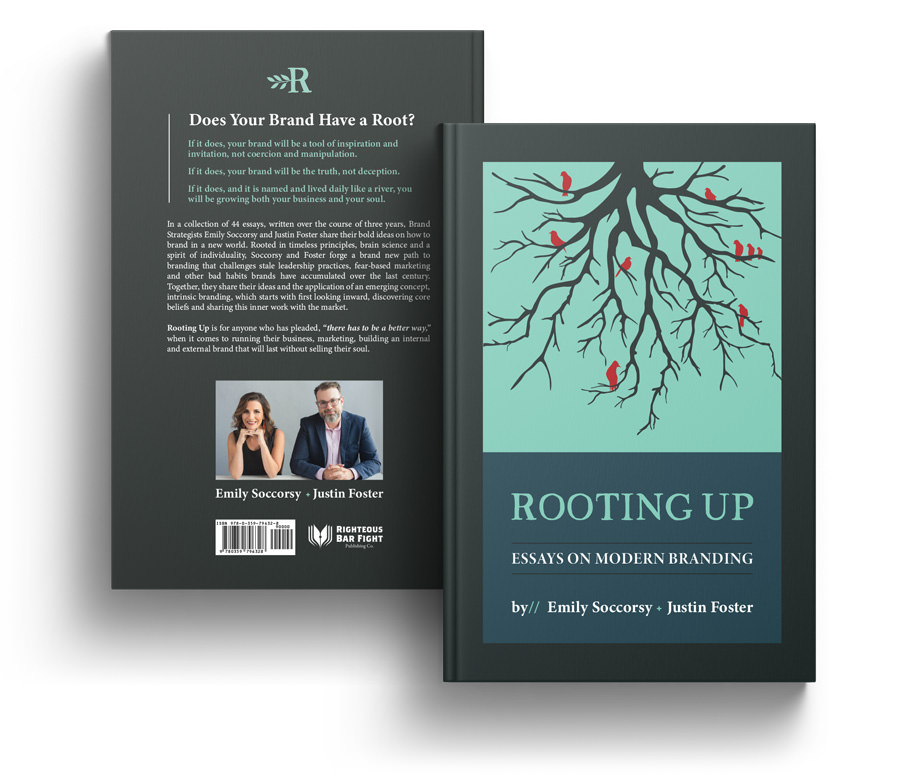Filed Under: 21st Century Branding, Press Mentions
Originally posted on AllBusiness.
Art credit: Drew Dernavich
By Emily Soccorsy and Justin Foster
Midlife crises are fairly easy to recognize in others, but they’re often not so easy to recognize in yourself—and sometimes even more difficult to recognize when it comes to your company.
Business owners have always had to grapple with marketplace changes, but now as a seasoned business owner, you are facing a new wave of trends such as a mobile workforce, social engagement with customers, unexpected competition from startups with slick marketing, disruptive new models of business, and generational shifts in leaders, employees, and customers. In the midst of these struggles, you may find yourself trapped between what you used to be and where you want to go next.
As your customers and employees get younger, you might feel surprisingly older and have the creeping feeling that you are out of touch. You used to be a trendsetter—the first to tell your peers about a new idea. There was a time when being relevant was easy, but now the pace of change has quickened and you worry you are too far behind to join the race. Rather than being the next Uber of your industry, you are simply trying figure out how to convert all of your twentieth century experience to new realities.
This is a midlife moment for your business. While you may be experiencing this phenomenon in a variety of unique ways, here are five signs that your company is having a midlife moment:
1. Brand Fractures
There’s a distinct fissure between the past and the future. There are some people in your organization who are fiercely holding onto the past and others who are furiously pushing forward with little awareness for the legacy of the company. This creates an internal lack of clarity, as well as confusion in the marketplace because people are unsure what your brand stands for.
2. Technology Gap
You use Facebook to keep up with your kids, grandkids, and college buddies, but you’re uncertain about the right approach to using technology as a marketing tool for your business. These insecurities are amplified by the fact that others in your industry have moved on with digital and social strategies that seem to be working.
3. Unawareness
Have you ever mentioned your favorite band from the seventies to an employee only to have them reply, “Who?” That may be happening with your brand too!
New competition, new marketing methods and massive amounts of noise and distractions have caused your brand to fade from top of mind to “never heard of you.” Leaders must set aside ego and accept that reengaging with new audiences is part of opting in.
4. Staleness
The logo, collateral, and website you used to love are starting to feel like leftovers that have been sitting in the fridge too long—and they sometimes even induce smirks on the faces of new hires and prospects. You know you need a change, but you don’t want to lose the brand recognition you’ve already built by starting all over.
5. Attraction
Your brand has moved from attractive to acceptable. You find that while you are still earning business, it’s from the same people you have always done business with. And when you are up to bat with a new prospect, your gold standard for closing the deal no longer works—forcing you to explain your value.
It’s Time to Change
If you’re experiencing any, or all, of these symptoms, then it’s time to initiate change. The great news is that the values, work ethic, drive, and experience that got you here will be the cornerstone to help you build the next level.
You do know who you are, and you do know what makes your company awesome, even though the marketplace may not anymore. The solution is to tell your story, and to give your customers the opportunity to connect with the humans behind your brand to see a new, more relevant side of who you are—and what your brand stands for—today.
A renewed focus on branding and marketing will do wonders to push you past this midlife moment—and back into the driver’s seat. Maybe the driver’s seat of a red convertible.
Emily Soccorsy + Justin Foster are cofounders of the intrinsic branding practice known as Root + River. Together with their defiantly different clients, they uncover then articulate the foundational elements of the brand. Then, they provide brand strategy and brand coaching as the brand is rolled out internally and externally. Obsessive about language and differentiation, Emily + Justin are also authors and speakers. Follow @rootandriver @fosterthinking and @emilyatlarge.
